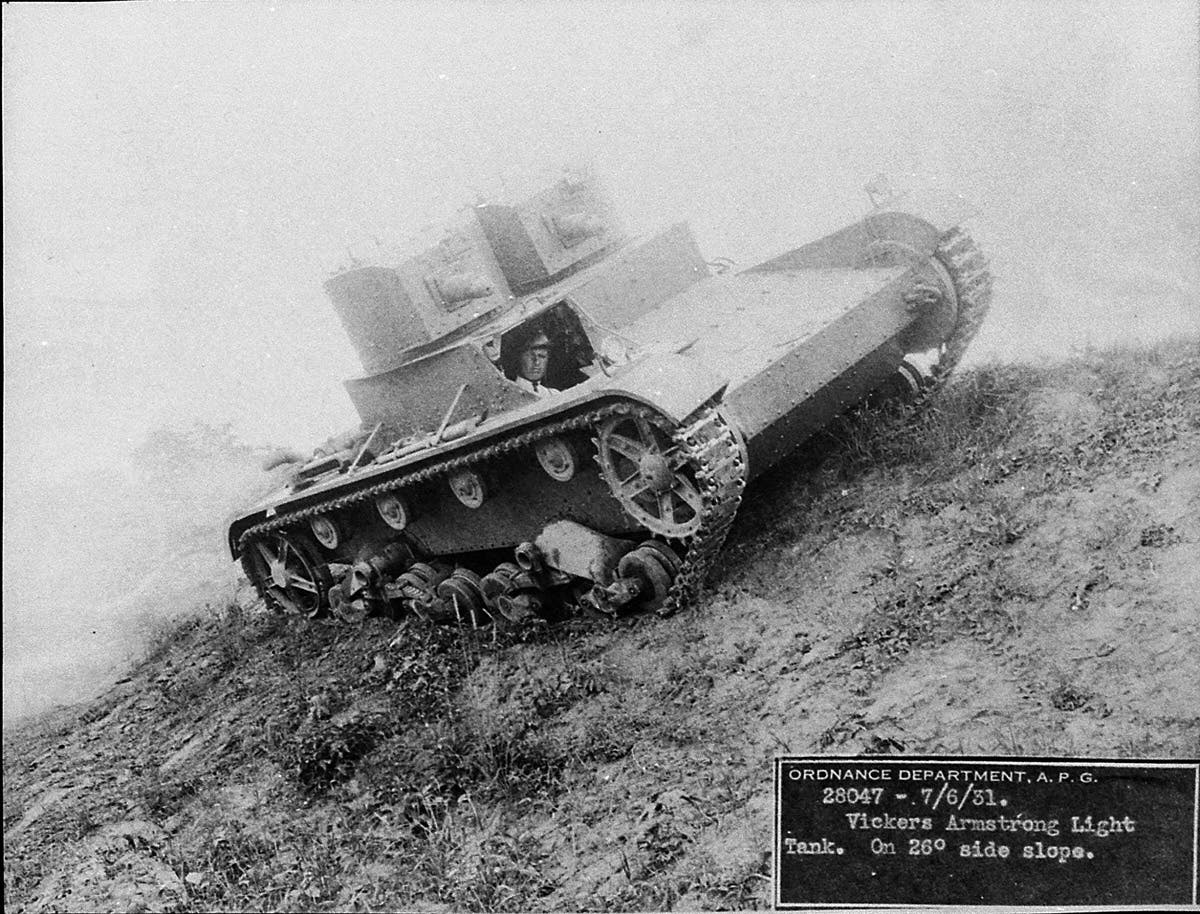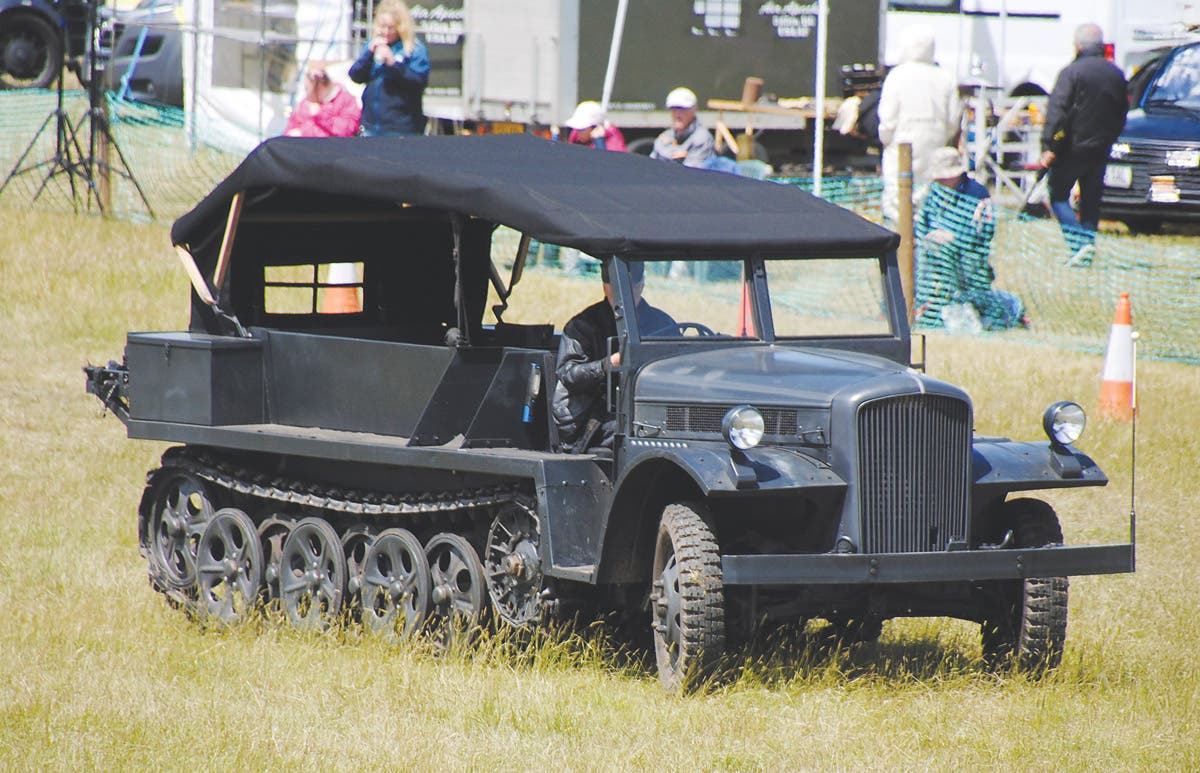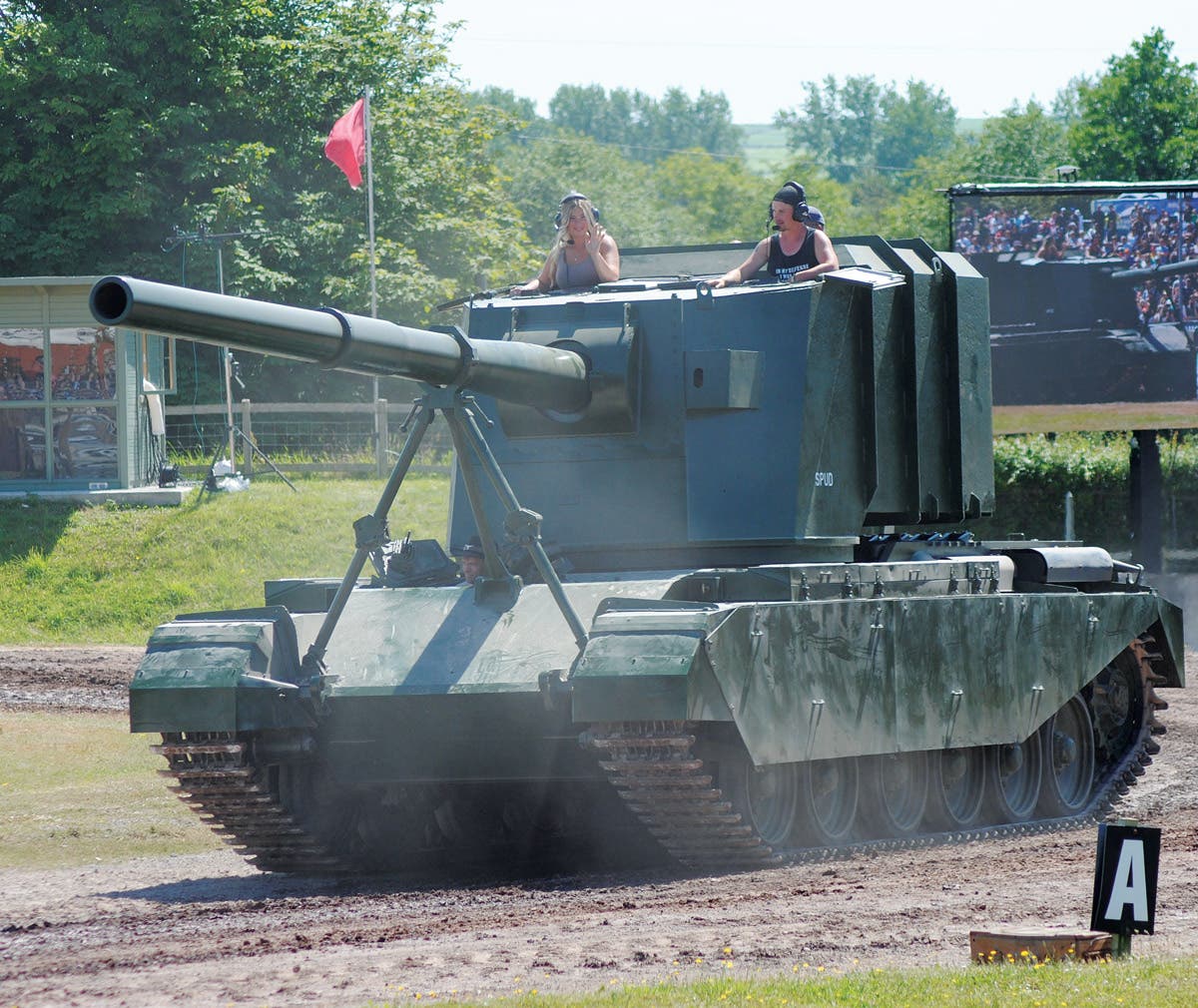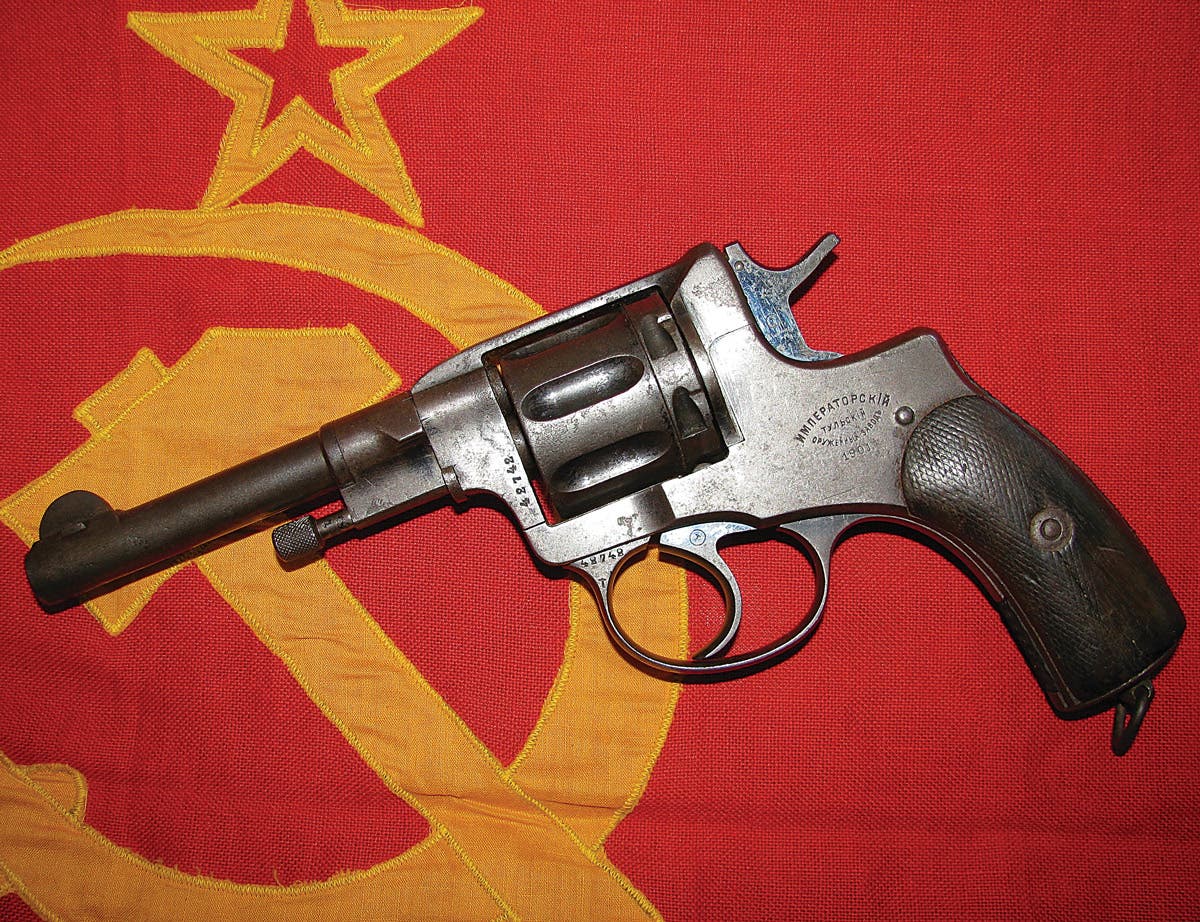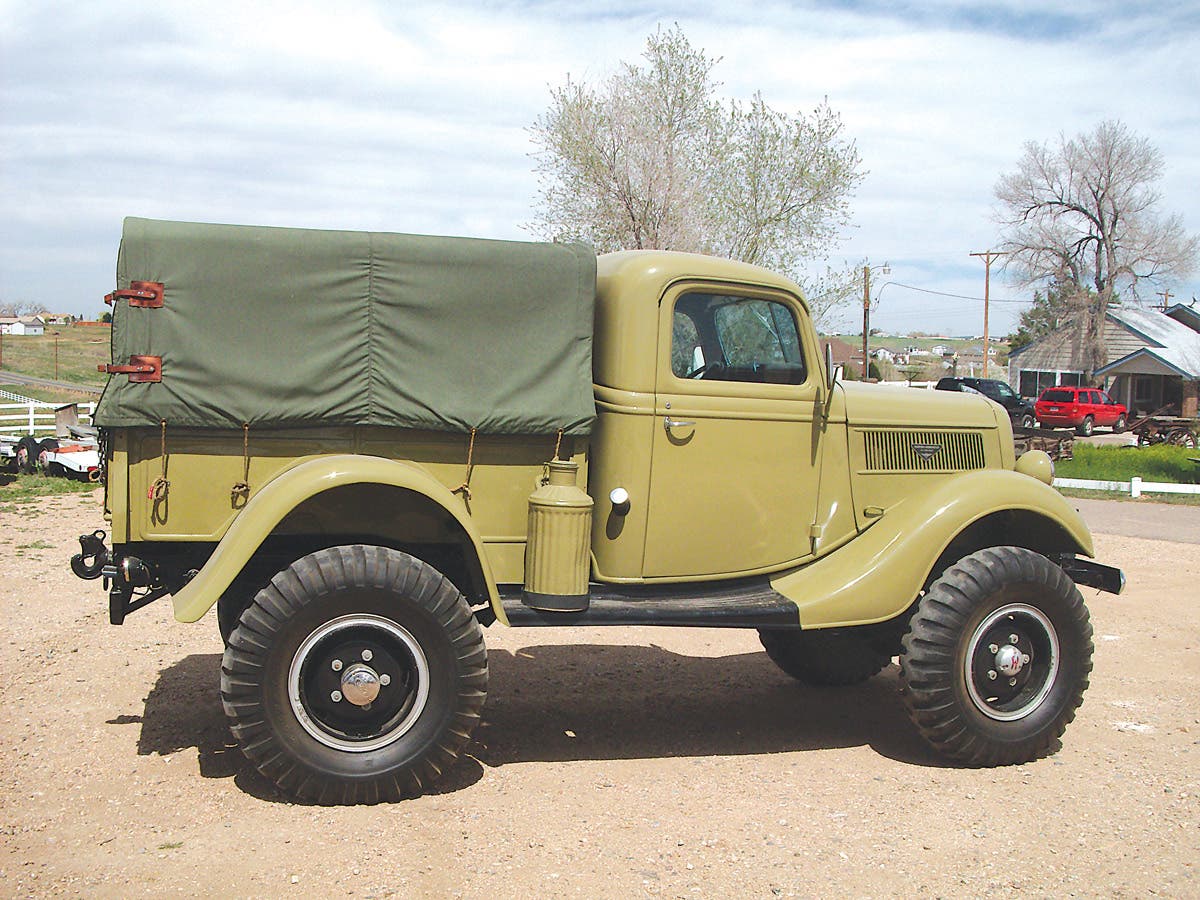Military Wreckers… and Their “Little Cousin”
A lifelong passion for military wreckers expressed in miniature
by John Hutterer
OnJune 14, 1775, Congress created the United States Army and, for roughly 165 years afterward, the Army was limited to traveling either on foot, or on horseback. The automobile was still a relatively recent invention when the First World War erupted in 1914. Certainly, there were cars and trucks used during that conflict, but horses were still a major source of motive power. It wasn’t until the late 1930s that the United States began to seriously look at mechanizing the Army. As late as 1941, at the conclusion of Divisional maneuvers, elements of the Army exchanged their horses at Camp Claiborne, Louisiana, for motorized vehicles before shipping off to the European Theater.
As the Army and all of the other branches began to mechanize, it became obvious that both wheeled- and tracked-vehicles were going to get stuck or damaged in battle. Some method of recovering and towing those vehicles was going of prime importance.
Obviously, many of the lighter vehicles such as Jeeps, Weapons Carriers, and Command Cars could be towed by a chain or rope attached to a larger vehicle, such as a 2-1/2-ton CCKW or DUKW, assuming that they were still upright and on their wheels. That, however, could tie up another vehicle that might be hauling urgently needed material or troops, and was only practical under ideal circumstances.
Tow trucks, or “wreckers” as they were often called, had been in existence on the civilian side of things for some time. However, they were often cobbled together with old scrap iron on an old Model T chassis, rather than being purpose-built. WWII changed all that.
US ARMY WWII WRECKERS
The most commonly known wrecker from WWII is the Diamond T Model 969. Built on a 4-ton chassis, the Model 969carried the Holmes W-45 Heavy Duty Military wrecker bed. The were twin booms mounted behind the cab each had a 5,000-pound capacity winch.
With stabilizing jacks mounted between the cab and the bed, the twin booms made the wreck even more versatile. Unlike other wreckers with fixed booms, the Diamond T 969 could perform side recovery operations with one boom, while tying the other boom off to an anchor on the opposite side of the vehicle.
The wrecker also came equipped with a selection of tools, chains, ropes, a cutting torch, and other recovery equipment. In addition, there was a 15,000-pound capacity recovery winch mounted behind the front bumper.
WWII also saw the introduction of two unique recovery vehicles. First, the Ward-LaFrance Model M1 Heavy Wrecker, built on a 10-ton chassis with a single-boom crane mounted to the recovery bed. The boom was raised, lowered, and rotated, manually. Several versions of this truck were built during the war, including some made by Kenworth, but all shared a similarity in design and equipment.
The second unique vehicle recovery vehicle to come out of WWII was the M26 “Pacific” tank retriever tractor. While not technically a wrecker, it was designed to recover and transport damaged tanks from the battlefield. It had a 35,000-pound capacity winch mounted under the cab and behind the front bumper. In addition, two massive 45,000 pound capacity winchesmounted to the frame sat behind the cab. An A-frame assembly attached at either side of the fifth wheel plate could be raised to any of 5 different positions. Tools, chains, a cutting torch, and other recovery equipment was standard on the M26.
WWII also saw the introduction of Armored Recovery Vehicles such as the M31 (converted from an M3 tank) and the M32 family based on the M4 Sherman chassis. While these are recovery vehicles, they don’t fall into a category that most would consider to be “wreckers.”
AFTER WWII
Much of what was used in WWII was carried over into the years leading up to and including the Korean War. Though there was a bit of up-grading and minor modification, generally not too much changed on the wreckers and recovery vehicles.
About the same time, the Army decided to develop a standard for vehicles and waited to see what various designers and manufacturers engineer. This ultimately resulted in the development of the G-741 type Dodge 3/4-ton truck followed by the G-742 (M35) 2-1/2-ton truck, and, a couple of years later, the G-744 (M51) series of 5-ton vehicles
The primary example of the G-741 vehicle line is the M37 Cargo Truck. Likely the rarest version of the M37 was the XM711 Wrecker. Fitted with a PTO that drove the front recovery winch as well as supplying power to the rear-mounted A-frame boom.
Going into production in 1950, the M35 series became so ubiquitous, it is what most people picture when they hear the words “army truck.” Two of the several versions of the M35 were wreckers. The M60 was a Light Recovery Wrecker, with a 15,000-pound drag winch mounted on the rear deck, while the M108 was designed to be a portable crane, used for material handling.
Unlike the M60, the M108 was not equipped with a rear deck drag winch. Ultimately, both trucks were determined to be too light for the type of work they were expected to do. M51 5-ton series vehicles replaced the M35-based wreckers.
The first of the 5-ton Medium Wreckers was the M62. These truckes were fitted with Austin Western wrecker beds mounted. The Austin Western bed featured a hydraulically powered crane that would rotate through 270 degrees, elevate to approximately 45 degrees, and extend to 18 feet. It came equipped with a tow bar and accessories, gas bottles and a welding/cutting torch, a tool box, and various pieces of recovery equipment. A spare tire was mounted on the passenger side of the crane. The 20,000 pound recovery winch was mounted on the front of the truck behind the bumper. The rear deck featured a 45,000-pound drag winch. Both winches were powered through the PTO and mechanical linkages.
The next vehicle in the 5-ton series was the M543 medium wrecker. Nearly identical to the M62, Gar Wood Corporation built the bed of the M543 and the spare tire was re-located to the rear wall of the cab. A large hydraulic reservoir occupied the space where the spare tire had been mounted on the M62.
One of the more unique vehicles in this class was the M246 Tractor/Wrecker. Built primarily for use in aircraft recovery, it had a crane with a boom that could extend to 26 feet, an enclosed cab for the crane operator, and a fifth wheel plate in place of the rear drag winch. The M246 tractor could haul a lowboy trailer to the site of a downed aircraft, and the crane could be used to load the aircraft onto the trailer.
The next phase in the 5-ton group was the M809 series of vehicles. These were, essentially, identical to the M51 series, except for that they were all powered by the NHC 250 Cummins diesel engine. The medium wrecker was designated the M816, while the Aircraft Recovery Tractor/Wrecker was the M819. In all other respects, they were identical to their M51 series counterparts.
The final transition in the 5-ton series of trucks is the M939 series. These trucks still used the Cummins NHC 250 engine, but the manual transmission was replaced with an Allison 5-speed automatic, the transfer case was now pressure lubricated, instead of splash lubricated, and the brakes are now full air brakes, instead of the older air over hydraulic version found on the M809 series.
The wrecker was designated the M936. The crane was still hydraulically operated as were both the front and rear winches. There was no Aircraft Recovery Tractor/Wrecker in this series.
The latest version of the wrecker is part of the Heavy Expanded Mobility Tactical Truck (HEMMT) series of vehicles. Designated as the M984 Wrecker, itis equipped with a 14,000- pound capacity, 9-foot boom crane at the rear, and a 60,000- pound drag winch. It has a small cargo bed for use in carrying replacement power packs and other supplies.
A PERSONAL TALE
At this point, this story takes a turn in a more personal direction. In 1995, the Fort Snelling Military Museum (FSMM) was established on the grounds of the Army Reserve base at Fort Snelling, Minnesota. I mention this because my 25-years in the Army (active, Reserve, National Guard) came to an end in November of 1997, and I joined the museum volunteers that same month. At that time, the Museum was still receiving artifacts from the government to include in the collection. Eventually, this grew to about 75 vehicles, ranging in size from an M274A4 Mule to M60A3 Main Battle Tanks.
Staff and volunteers would meet once a month and work all weekend on the artifacts. We were fortunate that some came to us in operational condition, requiring only basic maintenance to be ready to roll. On the other hand, many showed up in such poor condition it seemed the only things holding them together were paint and rust. Many artifacts required frame-up restorations.
As the museum continued to grow, we realized that we didn’t necessarily have all of the equipment needed to do our work. We spent an excessive amount of time walking back and forth between our workshop where we serviced the artifacts to our display area, nearly a block away.
One of our members solved that problem by donating an old, battery-powered golf cart. It needed quite a bit of work. The batteries were shot, the speed resistors were broken, some of the relays were out, several of the micro switches were bad, the wiring was shorted, and the seat was wrecked. Other than that, it was in great shape!
We completely re-furbished it, complete withold, legless chairs mounted in place of the worn out seat. I added a rear deck so that we could haul tools and parts. At the same time, I added a spray tank and bar, so that we could use it to control the weeds in our display area. Somewhere along the way, it got a coat of OD paint and some stenciled stars. Since it was being used in an operational motor pool, we mounted a flashing beacon on it.
The golf cart solved one of our problems, but we still lacked the ability to pull the pack from a tank or to do other heavy lifting. As luck would have it, I had always had a soft spot for wreckers. The versatility and power of the trucks impressed me, so I went looking for one to use at the museum.
I found an M816 for sale in Chillicothe, Ohio, at a State Forrest. It was being sold through the General Services Administration. I called the contact person and liked what I heard. I bid on it and won. A buddy and I drove out to Ohio, put batteries in it, did some basic service, and drove it 800 miles back to Fort Snelling. Luckily, I had discovered, before we left Ohio, that the last person to use the truck had filled the driver’s side tank with gasoline. I didn’t try running off of that tank, so we just made a few more fuel stops.
Now the museum had a wrecker that we could use for a variety of activities. We pulled several packs from a variety of tanks, lifted and moved many different loads that our forklift couldn’t handle, and ended up with a vehicle that we could add to our display and demonstration area.
While I had it at the museum, I would perform various services on it and keep it in top operating condition. We worked it so hard, I had to rebuild both the transfer case and the power divider, as well as replace the air pack on the brake system.
THE REST OF THE STORY
The FSMM had been in operation for 15 years when the Army decided to close it down. We weren’t happy with the decision, but that’s a whole other story.
As luck would have it, shortly before the museum was closed, I had experienced a medical issue that resulted in retiring from my job at a medical products company. As a retiree, I wanted to live out my life-long dream of having a small workshop to play around in. My wife and I found a small piece of property, and I built my workshop. In addition to two bays for working in, it hasa “wrecker bay”for the M816.
Since I had done so much work on the golf cart at the museum, I was allowed to bring it home after the museum closed. Once I had it there, I began to look at it from the viewpoint of “What can I do with it now?”
There are always things around the shop that need to be moved from one location to another, and my health doesn’t always allow me to do so on my own. I decided to add a boom to the rear of the golf cart that I could hook onto these items and haul them where I needed them to be.
The boom is only 2 feet long, but it does the job quite well. It pivots out of the way when not in use. It has a chain and hook that can be positioned at the right height to attach to a towed item, and it raises and lowers up to 250 pounds through the use of an electrically powered, linear actuator that operates off of the batteries that power the cart.
Naturally, the cart still has the OD paint job, the stars, spray tank, and the “whoopee light” that we had installed at the museum. With the addition of the boom, however, it has turned into a “mini” version of its big cousin, the M816 wrecker. Surprisingly, it has turned out to be every bit as useful!
Because the back half of the property is wooded, I have recently needed to remove several of the older trees. That golf cart has come in very handy! I can back up to a felled tree, wrap a chain around the trunk, fasten that chain to the hook on the cart boom, and raise the trunk off of the ground so that I can drag it to where I want it. I have hauled 30’ x 1’ diameter trunks that way. The system has worked beautifully.
I picked up a cheap plastic snow sled that I can slide under the end of the tree that would normally be dragging on the ground, so that I don’t tear up the lawn and make even more work for myself. I carry a couple of chains, some tools, a lifting strap, and a couple of ratchet straps on the cart at all times, so I’m pretty much ready to hook, haul, or handle anything that comes along.
The “Mini-Wrecker” has turned out to be far more practical and useful than I had ever thought–and a lot of fun to have around! Having recently replaced the batteries in it, I expect to get many more years use out of it. By the time this article is published, I will have used it to drag the pieces of two 75-foot tall maple trees that came down on the front of the property. There’s never a dull moment!
I would like to express my thanks to David Doyle and his wonderful Standard Catalog of U.S. Military Vehicles-Second Edition for help with this article.
From the staff of North America's no. 1 historic military vehicle source -- Military Vehicles Magazine



